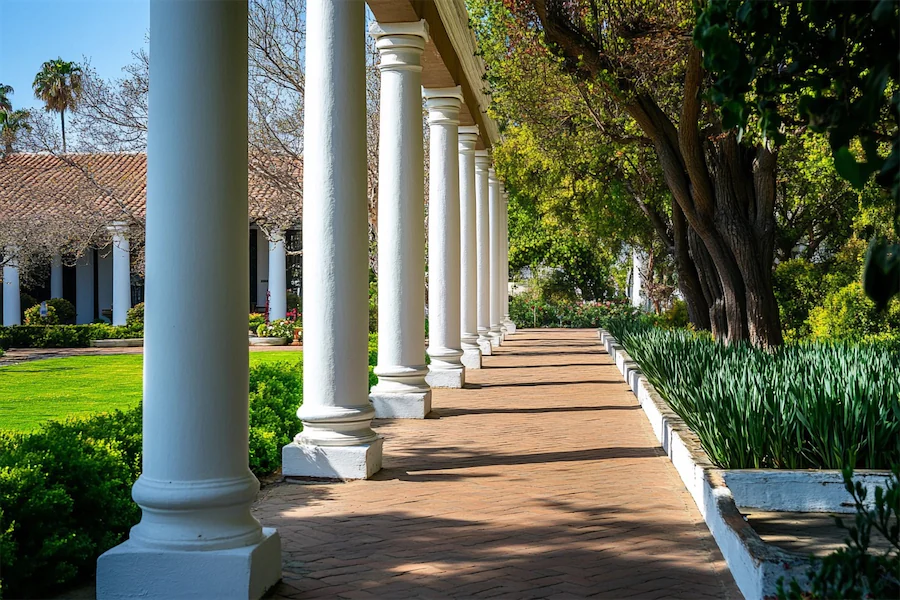Cape Dutch architecture, prominent in South Africa’s Western Cape, is distinguished by its ornate gables, thatched roofs, and symmetrical facades. While gables are the most recognizable feature, columns also play a significant role in this architectural style, providing both structural support and aesthetic appeal.
History and Origins of Cape Dutch Columns
The Cape Dutch style emerged in the 17th and 18th centuries, influenced by medieval Dutch, German, French, and Indonesian architecture. As the style evolved, particularly during the Neoclassical period, the incorporation of columns and pediments became popular, reflecting a shift towards more classical European architectural elements.
Key Features of Cape Dutch Columns
Cape Dutch columns exhibit several distinctive characteristics:
- Material: Traditionally constructed from locally sourced materials, these columns were often plastered and whitewashed to match the facades of the buildings.
- Design: Columns in Cape Dutch architecture range from simple, unadorned supports to more elaborate designs featuring classical elements such as pilasters and pediments. During the Neoclassical period, the use of columns became more pronounced, with some designs incorporating urns and other decorative features atop the columns.
- Placement: Columns are commonly found flanking entrance gates, supporting verandas, or as decorative elements on facades, contributing to the symmetrical and harmonious appearance typical of Cape Dutch architecture.
Applications of Cape Dutch Columns
In Cape Dutch architecture, columns serve both functional and decorative purposes:
- Structural Support: Columns provide support for verandas, porches, and gateways, ensuring stability and durability.
- Aesthetic Enhancement: The inclusion of columns adds to the grandeur and elegance of Cape Dutch buildings, often enhancing the visual impact of entrances and facades.
Considerations When Choosing Cape Dutch Columns
When selecting or restoring Cape Dutch columns, consider the following:
- Historical Accuracy: Ensure that the design and materials of the columns are consistent with the period and style of the original architecture to maintain authenticity.
- Craftsmanship: Due to the intricate designs that may be present, skilled artisans are essential for accurate restoration or reproduction of columns.
- Material Durability: Given the exposure to the elements, selecting materials that can withstand weathering is crucial for the longevity of the columns.
Conclusion
Cape Dutch columns are integral to the charm and functionality of this architectural style. Their design reflects a blend of practicality and ornamentation, contributing to the enduring appeal of Cape Dutch architecture. Whether preserving a historic building or constructing a new one inspired by this style, attention to the design and placement of columns is essential in maintaining the architectural integrity and aesthetic value of Cape Dutch structures.
